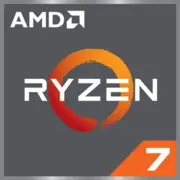AMD Ryzen 7 8745HX

AMD Ryzen 7 8745HX: brief and to the point
What it is
Ryzen 7 8745HX is an 8-core/16-thread processor from the Dragon Range Refresh family (Zen 4) for full-size HX-class gaming laptops. In practice, it’s an updated 7745HX with the same key parameters: base clock around 3.6 GHz, boost up to ~5.1 GHz, 32 MB L3, typical power 55 W (often raised to ~75 W depending on the laptop). Memory controller: DDR5-5200 (dual-channel). Integrated graphics: basic Radeon 610M (the platform assumes a discrete GPU).
Performance and competitors
In a well-cooled laptop, Ryzen 7 8745HX typically scores about ~18K in Cinebench R23 (multi) and ~1.8K in single. That positions it on par with Intel’s comparable HX/H-class models. The closest like-for-like competitors by feel and averages are Core i7-13650HX / Core i7-14650HX; in some thinner designs at similar power limits it lands near Core i7-13700H / 14700H. As with any HX chip, results vary with the configured TDP and the cooling capacity of a specific laptop.
Who it’s for
-
Gaming laptops and mobile workstations with discrete graphics and robust cooling.
-
Workloads that benefit from stable multi-threaded performance under sustained load.
-
If strong integrated graphics or a built-in NPU is required, HS-series (Phoenix/Strix) or Ryzen AI lines are more appropriate.
Bottom line
Ryzen 7 8745HX is a reliable HX-class “workhorse”: predictable Zen 4 performance, modern I/O, and comfortable power headroom. If you are choosing a gaming laptop with a discrete GPU and competent cooling, it stands shoulder-to-shoulder with Intel’s nearest Core i7 HX contenders and looks like a confident choice.
Basic
CPU Specifications
Memory Specifications
GPU Specifications
Miscellaneous
Benchmarks
Compared to Other CPU
Share in social media
Or Link To Us
<a href="https://cputronic.com/cpu/amd-ryzen-7-8745hx" target="_blank">AMD Ryzen 7 8745HX</a>